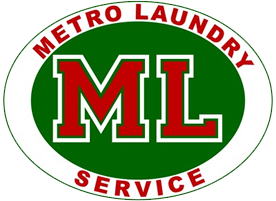Capital Opportunity: Metro Laundry Scores Big With DC-Area Hotels
By Jack Morgan, originally published in October 2019
Outsourcing spurred entrepreneur’s successful move from chemical rep to laundry executive
It all started with a voicemail. Bernard Young, a chemical company rep servicing on-premise laundry (OPL) and warewash (i.e., commercial dishwasher) accounts, noticed that many of the hotel laundries he visited were costly and inefficient. He figured he could do better as a niche service provider processing items such as customer-owned table linens.
So he went prospecting. He called one of his hotel customers to talk about outsourcing opportunities, never expecting the prompt response that he received. “In 2003, I got the first opportunity to do a major hotel,” Young says. “I was doing sales calls while selling chemicals, and I left a voicemail message for, at the time what was called the Hamilton Crown Plaza. I left a message on their voicemail because no one answered the phone.”
Not long after, a hotel manager returned Young’s call and asked to meet with him to discuss options for changing his outsourced laundry provider. At the time, the startup version of Metro Laundry Service was relying on a few second-hand washer/extractors and dryers and three employees to process mainly table linens in a 1,500-square-foot (139 square meter) facility.
“I went in and I expected to be talking to the executive housekeeper, but was sur- prised to see the actual general manager there to talk to me,” Young says. “I told him that I really hadn’t had any major hotels. The only one I had been doing was a small hotel in Georgetown. But if he could give me the opportunity, I felt I could do it.”
The manager then showed Young the laundry where he saw hundreds of pounds of linens awaiting processing.
The hotel was unhappy with its current outsource provider and was looking for a more reliable partner.
“He told me that they had been through a few competitors that I had heard about. He had called me because he wanted to try a smaller vender because of his expe- rience with the bigger vendors. He felt that maybe with the smaller venders we could offer a more personalized service.”
After seeing the 13-14 bins of soiled goods in laundry dock area, Young told the manager he’d like to take on the account, but it would take a couple of months to upgrade his equipment. Again, to his surprise, the manager told Young he’d wait, and to go ahead and set up a laundry capable of processing goods on a larger scale. Young did just that. “We went out and purchased a 120- inch (304 cm) gas ironer, a folder, and a 250 lb. (113 kg) washer,” he says. “We got a bigger truck. At the time we only had a van, so I got a 24-foot (7.3 meter) truck. All of this was used equipment by the way—not rebuilt, just used.”

